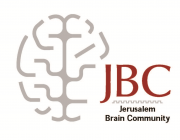
Dr. Avi Priel
The ability of an organism to sense and react to painful stimuli is essential for its survival. In mammals, distinct somatosensory neuronal cells in the trigeminal (TG) and dorsal root (DRG) ganglia, known as nociceptors, are responsible for the detection of environmental and endogenous noxious stimuli. The main detectors in these neurons are specifically expressed ligand-gated ion channels/receptors such as the somatosensory TRP channels. These receptors are the first to detect noxious stimuli both from chemical and/or physical origin and to initiate signal propagation to the brain. Moreover, their activation might result in a neurogenic inflammation due to a release of neuropeptides (such as substance P) from the nociceptors, which recruit and activate the immune system at the site of injury. Thus, pain receptors are responsible for the response of both the central nervous and the immune systems to noxious stimuli. Our lab focuses on the cellular, molecular and pharmacological basis of the pain receptors response. To this end, we employ different methodologies including electrophysiology (patch clamp recordings), live-cell calcium imaging, mutagenesis, primary and secondary cell cultures and various biochemical assays.

